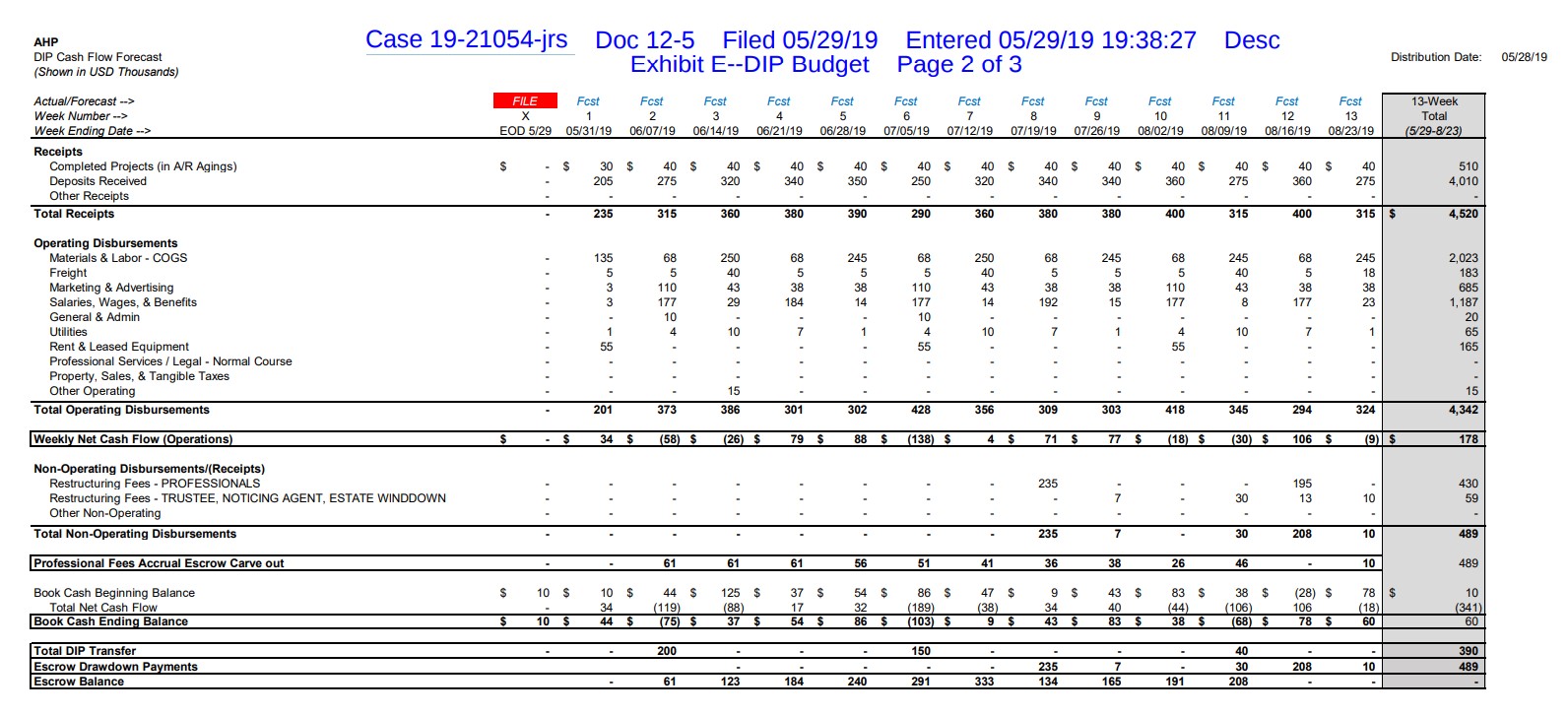

Finance
How Much Do Motorcycle Insurance Cost
Published: November 13, 2023
Find out how much motorcycle insurance costs and get tips on financing your coverage. Compare quotes to find the best finance options for your ride.
(Many of the links in this article redirect to a specific reviewed product. Your purchase of these products through affiliate links helps to generate commission for LiveWell, at no extra cost. Learn more)
Table of Contents
Introduction
When it comes to owning a motorcycle, there are many factors to consider, and one of the most important is insurance. Motorcycle insurance not only provides financial protection in case of accidents or theft, but it is also a legal requirement in most states. However, understanding the cost of motorcycle insurance can be a daunting task.
Motorcycle insurance costs can vary significantly depending on various factors such as the type of motorcycle, the rider’s age and experience, their driving history, and even their location. Insurance providers take these factors into account when determining premiums, which can make the cost of insuring a motorcycle seem unpredictable.
In this article, we will explore the different factors that affect motorcycle insurance costs, the state requirements for motorcycle insurance, and the average cost of motorcycle insurance. We will also discuss the types of coverage available and provide tips for lowering motorcycle insurance costs. Additionally, we will compare motorcycle insurance providers to help you make an informed decision.
Whether you are a seasoned motorcycle enthusiast or a new rider, understanding motorcycle insurance costs is crucial in ensuring you have the right coverage to protect yourself and your motorcycle.
Factors Affecting Motorcycle Insurance Costs
When it comes to determining the cost of motorcycle insurance, insurance providers take into account several factors. Understanding these factors can help you better understand why your specific insurance premium may be higher or lower. Here are some key factors that can affect motorcycle insurance costs:
- Type of Motorcycle: The type of motorcycle you own can greatly impact your insurance costs. Generally, high-performance motorcycles or sport bikes have higher insurance premiums due to their increased likelihood of accidents and higher repair costs.
- Rider’s Age and Experience: Age and riding experience can play a role in determining insurance costs. Younger and less experienced riders are considered higher risk and may face higher premiums.
- Driving History: Your driving history, including any previous accidents or traffic violations, can impact your insurance rates. If you have a clean driving record, you may qualify for lower premiums.
- Location: Insurance rates can vary based on your location. Areas with higher crime rates or higher accident frequencies may lead to higher insurance costs.
- Usage: How often and for what purpose you use your motorcycle can also affect insurance costs. If you use your motorcycle for daily commuting, you may face higher rates compared to someone who only rides occasionally for pleasure.
- Security Measures: The security measures you have in place can impact your insurance rates. Installing anti-theft devices, GPS trackers, or keeping your motorcycle in a secure location can potentially lower your premiums.
It’s important to remember that these factors are not set in stone and can vary between insurance providers. Some insurance companies may place more weight on certain factors than others, which is why it’s essential to shop around and compare quotes from different providers.
Now that we understand the factors that affect motorcycle insurance costs, let’s take a closer look at the state requirements for motorcycle insurance.
State Requirements for Motorcycle Insurance
Each state in the United States has its own set of requirements when it comes to motorcycle insurance. These requirements dictate the minimum amount of insurance coverage that riders must carry in order to legally operate their motorcycles on public roads. It’s important to understand the specific requirements in your state to ensure compliance and avoid any potential legal consequences.
The most common type of motorcycle insurance required by states is Liability Insurance, which covers damages to other people and their property in case of an accident where you are at fault. This coverage helps protect you from financial liability in the event that you cause injury or property damage to others while riding your motorcycle. The minimum liability coverage limits vary by state, but they typically include bodily injury liability and property damage liability.
Some states may also require additional coverage, such as Uninsured/Underinsured Motorist Coverage, which provides protection if you are involved in an accident with a driver who does not have insurance or does not have enough insurance to cover your damages.
It’s important to note that while states may establish minimum insurance requirements, they may not always be sufficient to fully protect you in the event of a serious accident. It is recommended to consider additional coverage options to ensure you have adequate protection.
It’s worth noting that some states may have alternative requirements to traditional insurance, such as self-insurance options or posting a bond or financial responsibility deposit. It’s crucial to research and understand the specific requirements in your state to ensure compliance.
Failure to meet the state’s insurance requirements can result in various consequences, including fines, license suspensions, or even impoundment of your motorcycle. By understanding and adhering to the state requirements for motorcycle insurance, you can ensure that you are legally protected and prepared for any unexpected situations on the road.
Now that we have covered the state requirements, let’s explore the average cost of motorcycle insurance.
Average Cost of Motorcycle Insurance
The average cost of motorcycle insurance can vary significantly depending on several factors, including the type of motorcycle, the rider’s age and experience, their location, and the coverage options chosen. However, to provide a general idea, let’s look at some average figures.
Generally, motorcycle insurance premiums tend to be lower than car insurance premiums. According to recent data, the average cost of motorcycle insurance in the United States ranges from $200 to $500 per year. However, this can vary significantly based on the aforementioned factors.
The type of motorcycle you own plays a significant role in determining insurance costs. For example, insuring a high-performance sport bike will likely be more expensive than insuring a standard commuter motorcycle. In addition, the rider’s age and experience can impact the rates, with younger and less experienced riders facing higher premiums.
Location also plays a role in insurance costs. Urban areas or regions with higher crime rates may have higher premiums due to the increased risk of theft or accidents. Furthermore, the coverage options you choose, such as liability limits and deductibles, will also affect the overall cost of your motorcycle insurance.
It’s important to note that these figures are just averages, and insurance rates can vary significantly between individuals based on their unique circumstances. To get an accurate estimate of the cost of motorcycle insurance for your specific situation, it’s recommended to request quotes from multiple insurance providers.
While motorcycle insurance is a necessary expense to protect yourself and your motorcycle, there are steps you can take to lower your premiums. In the next section, we will explore some tips for lowering motorcycle insurance costs.
Types of Coverage and Their Costs
Motorcycle insurance coverage comes in various forms, each offering different levels of protection and liability. Understanding the types of coverage available and their associated costs is important when selecting the right insurance policy for your motorcycle. Here are the main types of coverage you should be aware of:
- Liability Insurance: Liability insurance is the most basic and essential coverage for motorcycle owners. It provides financial protection if you cause injury or property damage to others while riding your motorcycle. The cost of liability insurance will vary depending on factors such as your location, riding history, and the coverage limits you choose.
- Collision Coverage: Collision coverage pays for the repair or replacement of your motorcycle if it is damaged in an accident, regardless of fault. The cost of collision coverage depends on factors such as the value of your motorcycle, your deductible amount, and your riding history.
- Comprehensive Coverage: Comprehensive coverage protects against non-collision events such as theft, vandalism, fire, or natural disasters. The cost of comprehensive coverage is influenced by factors such as the value of your motorcycle, your deductible amount, and the security features you have installed.
- Uninsured/Underinsured Motorist Coverage: This coverage provides protection if you are involved in an accident with a motorist who has inadequate insurance coverage or no insurance at all. The cost of uninsured/underinsured motorist coverage will vary based on factors such as your location and the coverage limits you choose.
- Medical Payments Coverage: Medical payments coverage helps cover medical expenses for you and your passengers if injured in a motorcycle accident, regardless of who is at fault. The cost of medical payments coverage will depend on the coverage limits you select.
- Accessory Coverage: Accessory coverage provides protection for aftermarket upgrades or modifications to your motorcycle, such as customized parts, luggage, or electronic equipment. The cost of accessory coverage will vary based on the value of the accessories and the coverage limits you choose.
It’s important to remember that the cost of each type of coverage will vary depending on factors such as your motorcycle’s value, your riding history, and the coverage limits and deductibles you select. Additionally, bundling multiple coverage options with the same insurance provider may offer potential discounts.
Now that we understand the types of coverage available, let’s explore some useful tips for lowering motorcycle insurance costs.
Tips for Lowering Motorcycle Insurance Costs
While motorcycle insurance is a necessary expense, there are several strategies you can employ to help lower your insurance premiums. Consider these tips to potentially reduce your motorcycle insurance costs:
- Safe Riding and Claim-Free Discount: Maintain a clean driving record by practicing safe riding habits and avoiding accidents. Insurance providers often offer discounts for riders with a claim-free history.
- Take a Safety Course: Completing a motorcycle safety course can demonstrate your commitment to safety and may qualify you for insurance discounts.
- Choose a Higher Deductible: Opting for a higher deductible can lower your insurance premiums. However, ensure that you can comfortably afford the deductible amount in case of a claim.
- Secure Parking: Parking your motorcycle in a secure garage or installing anti-theft devices can reduce the risk of theft, potentially leading to lower insurance rates.
- Bundle Policies: Consider bundling your motorcycle insurance with other policies, such as auto or homeowner’s insurance, with the same provider. This may result in multi-policy discounts.
- Shop Around: Take the time to compare quotes from multiple insurance providers. Each company has its own pricing structure, and shopping around can help you find the best rates for your coverage needs.
- Consider Usage-Based Insurance: Usage-based insurance programs utilize telematics devices or mobile apps to track your riding habits. By demonstrating safe riding behaviors, you may be eligible for discounts based on your actual usage and riding patterns.
- Review Your Coverage: Regularly assess your coverage needs and make adjustments accordingly. If your motorcycle’s value has depreciated, you may be able to lower your coverage limits and save on premiums.
- Check for Discounts: Inquire with your insurance provider about any available discounts. Some companies offer discounts for affiliations with certain motorcycle associations or for completing motorcycle safety courses.
Implementing these tips can potentially help you save money on your motorcycle insurance premiums. Remember to consult with your insurance provider and review your policy to ensure you have the necessary coverage to protect yourself and your motorcycle.
Now that we have explored strategies to lower insurance costs, let’s move on to the next section where we will compare motorcycle insurance providers.
Comparison of Motorcycle Insurance Providers
When it comes to choosing a motorcycle insurance provider, it’s important to compare various options to ensure you get the best coverage at an affordable price. While there are numerous insurance companies that offer motorcycle insurance, here are a few well-known providers to consider:
- Progressive: Progressive is a popular motorcycle insurance provider that offers a wide range of coverage options. They are known for their competitive rates, discounts for safe riding habits, and their comprehensive online quote tool.
- Geico: Geico is a reputable provider that offers motorcycle insurance with customizable coverage options. They are known for their excellent customer service, competitive rates, and extensive network of repair shops.
- Allstate: Allstate is another prominent insurance provider that offers motorcycle coverage. They provide various coverage options, including specialized coverage for customized motorcycles. Allstate is recognized for their extensive agent network and reliable claims handling.
- State Farm: State Farm is a widely recognized insurance company that offers motorcycle insurance. They provide flexible coverage options, multi-policy discounts, and a user-friendly website for managing policies and claims.
- Nationwide: Nationwide is an insurance provider that offers motorcycle coverage designed specifically for riders. They offer customizable policies, discounts for safe riders, and optional coverage for accessories and customized parts.
- USAA: USAA is available to military members and their families and provides motorcycle insurance with comprehensive coverage options. They are known for their competitive rates, excellent customer service, and flexible payment options.
When comparing motorcycle insurance providers, consider factors such as coverage options, discounts available, customer service reputation, claims process, and pricing. It’s also a good idea to read reviews and seek recommendations from fellow riders to get a better understanding of each company’s strengths and weaknesses.
Keep in mind that insurance needs can vary based on personal circumstances, preferences, and the type of motorcycle you own. Take the time to gather quotes from multiple providers and carefully evaluate each option to find the best motorcycle insurance provider for your needs.
Now that we have covered the comparison of motorcycle insurance providers, let’s conclude our article.
Conclusion
Obtaining motorcycle insurance is not only a legal requirement but also a vital aspect of protecting yourself and your motorcycle from potential financial losses. Understanding the factors that affect motorcycle insurance costs, the state requirements, and the types of coverage available is essential in making informed decisions about your insurance policy.
Factors such as the type of motorcycle, rider’s age and experience, driving history, location, and security measures can significantly impact the cost of motorcycle insurance. It’s important to shop around and compare quotes from different insurance providers to find the most suitable coverage at a competitive price.
Meeting the state requirements for motorcycle insurance is crucial to ensure legal compliance and avoid potential penalties. It’s advisable to familiarize yourself with the specific insurance requirements of your state to ensure adequate coverage.
The average cost of motorcycle insurance can vary depending on several factors. It’s important to remember that these figures are averages and may not accurately reflect your specific situation. Obtaining personalized quotes from insurance providers will help you get a more accurate estimate of the cost of motorcycle insurance for your needs.
Understanding the different types of coverage available, such as liability insurance, collision coverage, comprehensive coverage, and uninsured/underinsured motorist coverage, allows you to select the appropriate options to protect yourself and your motorcycle.
There are several strategies available to lower motorcycle insurance costs, such as safe riding, taking safety courses, choosing a higher deductible, securing your motorcycle, bundling policies, and shopping around for the best rates. By implementing these tips, you can potentially reduce your insurance premiums without sacrificing necessary coverage.
Lastly, comparing motorcycle insurance providers is crucial to finding the right insurance company. Researching and comparing the coverage options, discounts, customer service, claims handling, and reputation of various insurers will help you make an informed decision.
Ultimately, motorcycle insurance is a crucial investment to protect yourself and your motorcycle from potential financial hardships. By understanding the factors influencing insurance costs, meeting state requirements, selecting the right coverage options, implementing cost-saving strategies, and choosing a reputable insurance provider, you can confidently ride knowing you have the necessary protection in place.














